You probably already know that banh mi is one of the top favorite breakfast dishes in Vietnam. So, what about other dishes on the delicious breakfast list? Today, you are going to discover one of the most interesting and oldest breakfast dishes in Vietnam: banh cuon – Vietnamese steamed rice rolls.
For more breakfast dishes: Your definitive guide to Vietnamese breakfast dishes
Contents
What is Banh Cuon – Vietnamese Steamed Rice Rolls
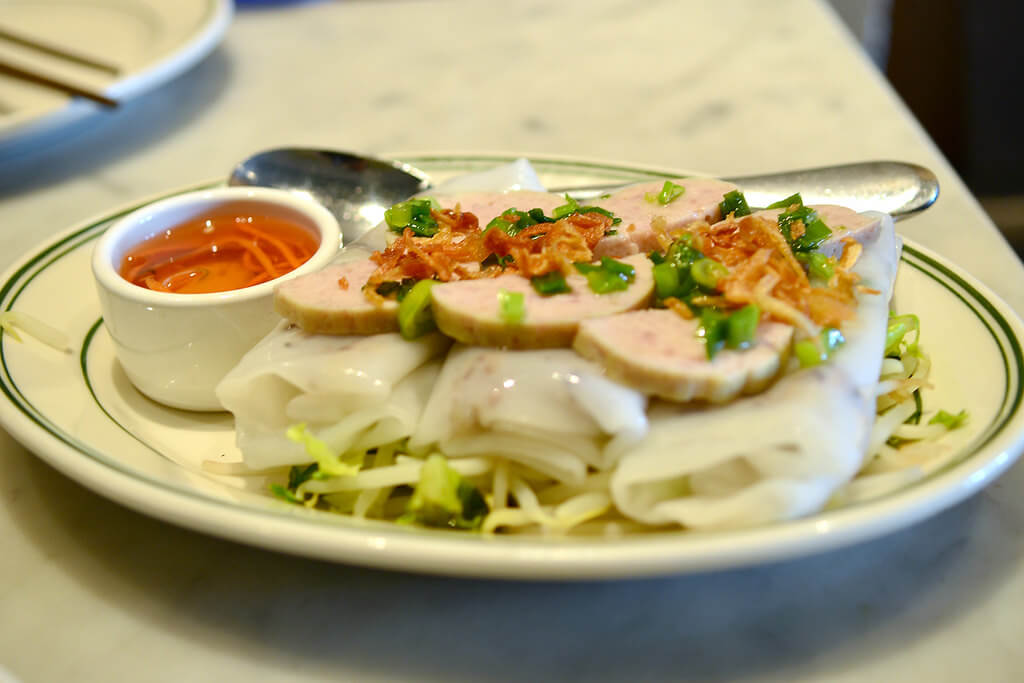
Let’s go back in time to Prince An Quoc’s era (roughly 300 BC). Ancestors of the Vietnamese moved to the region which is known as Thanh Tri Ward (Hanoi) today and started to grow rice there. The steamed rice roll was thus born. Two millenniums passed by, the dish spread around the country, and now has become one of the most popular Vietnamese breakfasts of all social classes.
Banh cuon sounds pretty easy to make, however, it requires a certain skill to roll a good one. The original Thanh Tri version contains no fillings. Slowly, banh cuon with various fillings and styles came to be. Basically, we can divide the standard serving of banh cuon into three main parts: the soft rice cover, the sophisticated fillings, and the tasty sauce.
Banh Cuon sounds pretty easy to make, however, it requires a certain skill to roll a good one.
How to Make Banh Cuon?
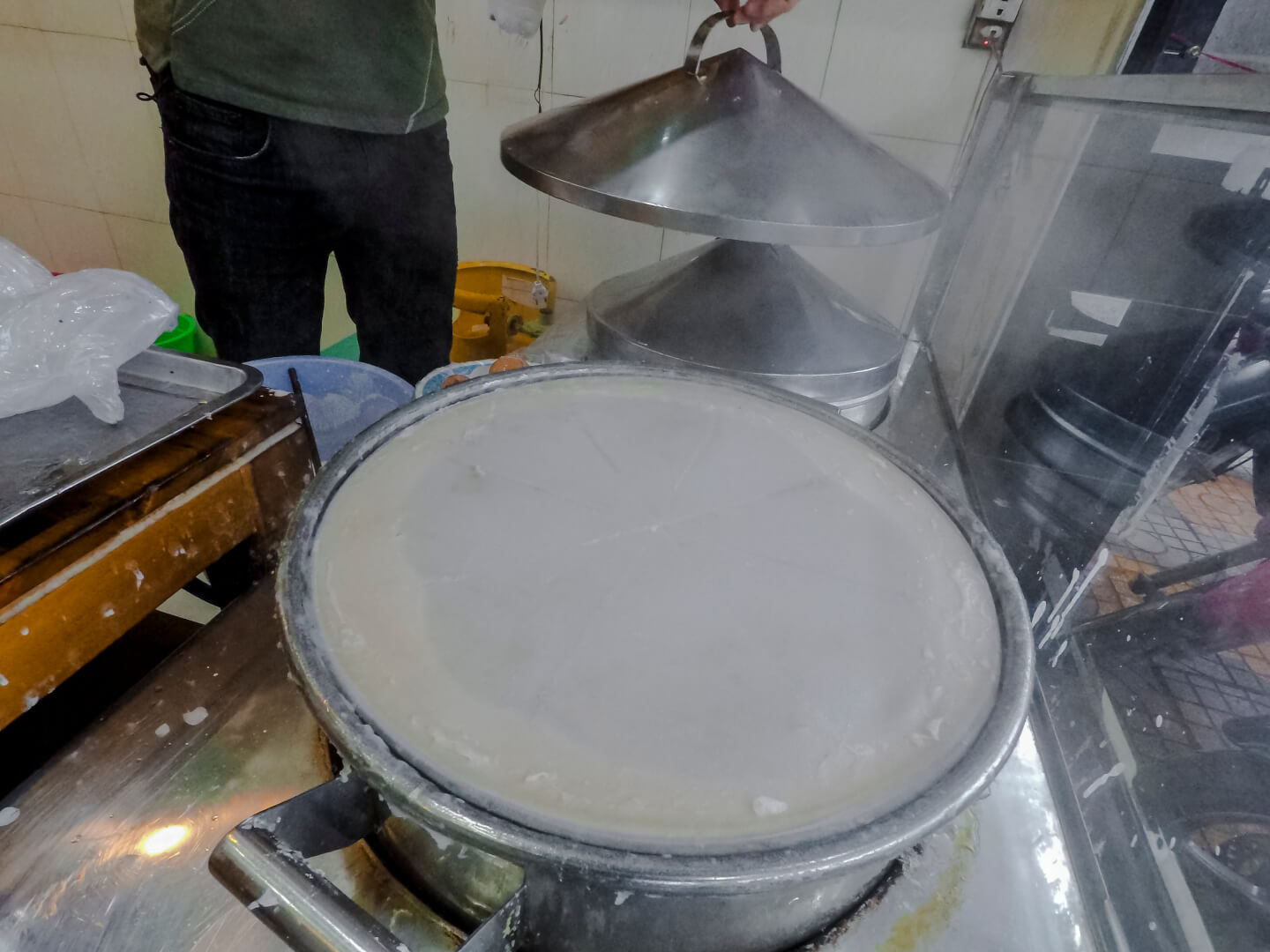
Fillings: Most of the time, banh cuon filling is a beautiful combination of various types of mushroom, especially the wood ear mushroom, pork (or shrimp), and onion. Different regions have their own alternatives. These ingredients are minced and mixed together with spices. Unlike the rice batter, banh cuon filling is fried with a bit of water right after the preparation process.
Sauce: Banh cuon tastes best when accompanied by a delicious, flavor-enhancing sauce. Fish sauce is most commonly used to make the liquid. A combination of warm water and a little sugar is essential to soften the saltiness, and a bit of additional vinegar would be perfect to create the slightly sour flavor. Customers may add more kumquat to enhance the acidity, which shall leverage the taste of the pork. We encourage spicy lovers to use chili!
The process: A big banh cuon steamer, a piece of cloth double the size of the pot/ steamer, and a long flat chopstick are the best friends of the cook! The cloth should cover the top of the steamer tightly. As water comes to boil in the steamer, it releases steam through the cloth layer throughout the day.
Do you still remember our batter? Inside the bucket (which is usually covered with layers of banana leaves), our batter patiently awaits an eager order from a customer. When the order is made, a spoonful of batter shall be taken out from the bucket and spread thinly over the fuming cloth layer. A special chopstick is then used to shape the liquid layer into a perfectly thin and round shape, not terribly unlike a crepe.
Within half a minute, the liquid becomes sticky. It immediately is removed from the steam with a flat chopstick and skillfully placed on a big plate. Another super thin rice paper is steamed similarly and stacked on top of the previous layer on the plate. This process repeats until the rice cover reaches its tasty thickness. At this point, the filling is carefully placed on the top of the steaming layers, then rolled, and cut into knuckle length pieces. You will find fried onion toppings and additional fresh spices and veggies accompanying your banh cuon serving.
How to Eat Banh Cuon?
The manner of eating banh cuon differs from the North to the South of Vietnam. In Hanoi, a serving of banh cuon usually involves three plates and one little bowl. Our tasty, ready-to-use sauce comes in the small bowl. Banh cuon rolls, optional sausages, and spicy vegetables are on separate plates. You then ake one piece of banh cuon and dip it into the sauce before enjoying it. You can eat the sausages and vegetables as you prefer.
In the South, banh cuon, sausages, and vegetables come together on the same plate. Guest pour the sauce directly onto the plate, turn the rolls upside down to equally spread the flavor, and then enjoy everything all at once.
The manner of eating Banh Cuon differs from the North to the South of Vietnam.
Where to Find Banh Cuon in Vietnam?
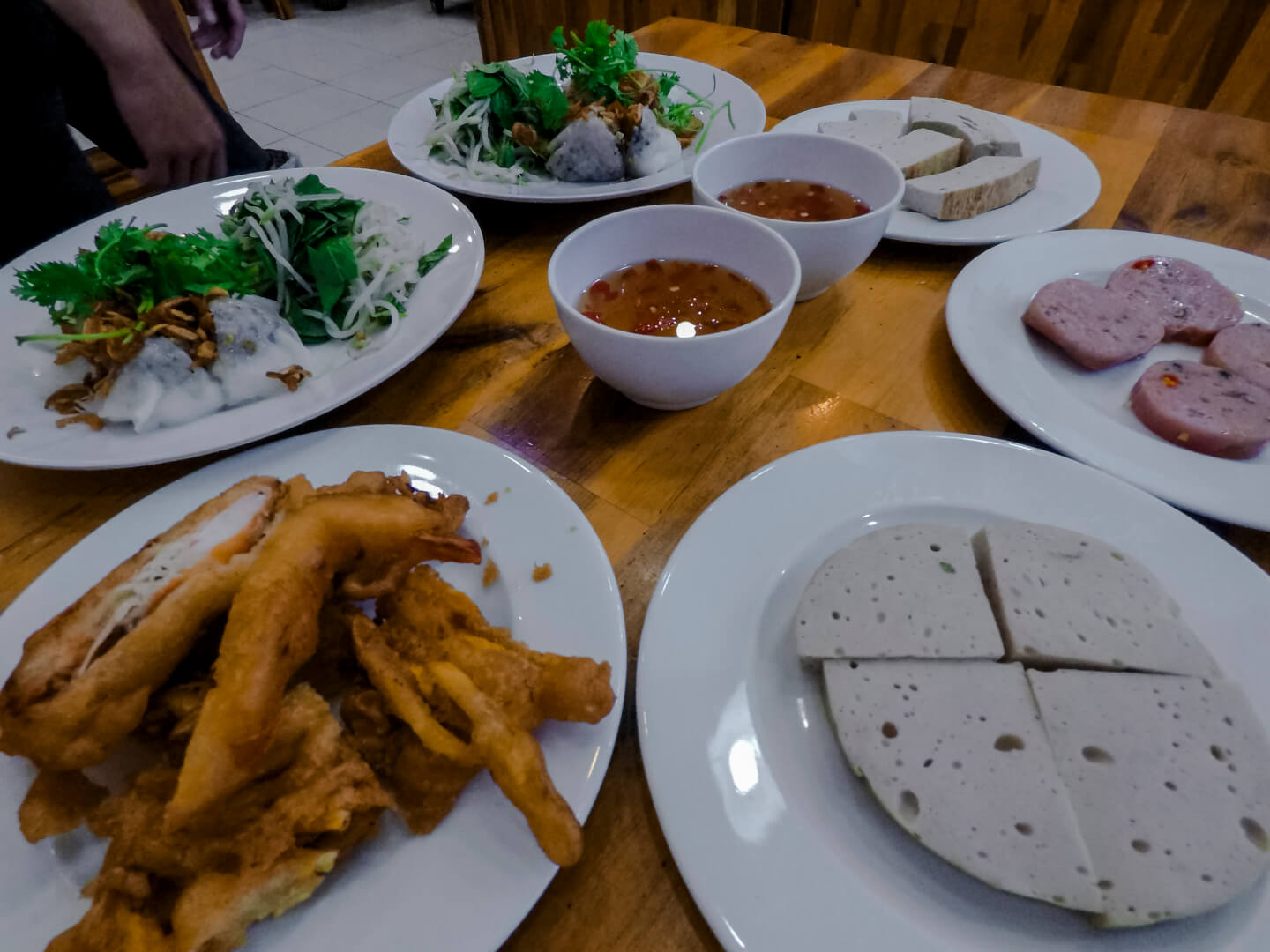
Banh cuon originally came from the North and that’s where you can find the best banh cuon. Below are recommendations for you.
Hanoi: Banh cuon is a must-try specialty in Hanoi. Banh cuon Thanh Tri (from Thanh Tri ward) should definitely be on your priority list. Ba Hoanh Banh Cuon store on To Hien Thanh street offers one of the most favorable dishes in the city. If you like chicken, do not forget to drop by Thanh Van store on Hang Ga street. Chicken with banh cuon is really rare, yet people seem truly love it!
Phu Ly (Ha Nam): Instead of being served with fuming white rolls, banh cuon of Phu Ly is better at a cool temperature. These rice rolls contain no filling and come with grilled tasty pork, which creates a totally unique taste for the dish.
Lang Son: Offering egg steamed rice rolls, banh cuon Lang Son is a bit strange. The filling has egg and sliced pork, which creates an interesting flavor.
Vegetarian tips: It is not common to have a serving of vegetarian steamed rice rolls. However, do not hesitate to look for one in a Vietnamese style veggie restaurant!
Top 5 Best Banh Cuon in Saigon
1. Banh Cuon Nho Restaurant – 353 Le Van Sy St., D.3
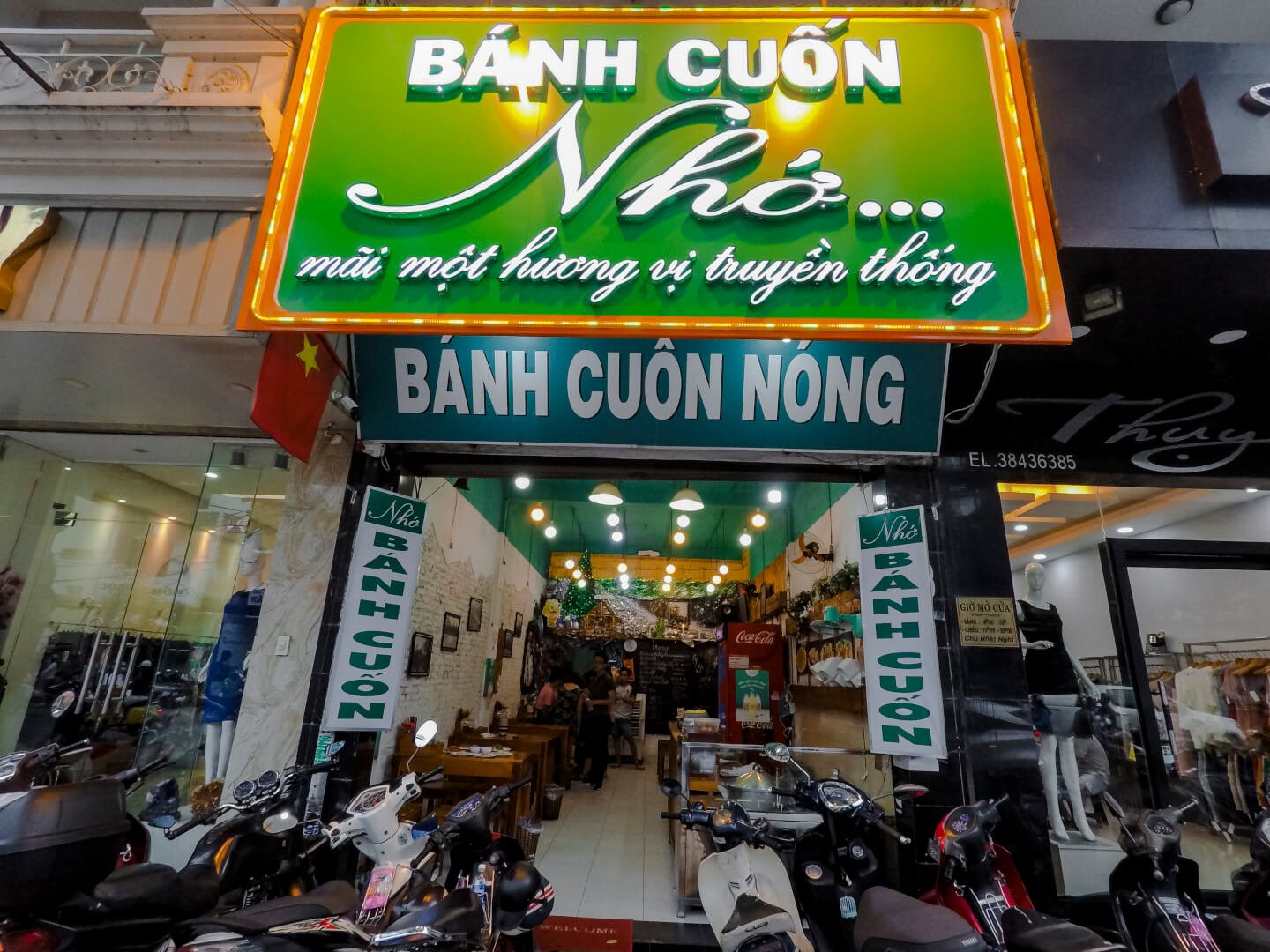
With walls decorated with photos of Saigon’s old days, and a black and white painting depicting the image of Trinh Cong Son, Nho Restaurant has a pleasantly nostalgic atmosphere. The space is warm with wood furniture, the banh cuon is delicious, and the service is extremely friendly.
Opening hours: 6 AM – 10 PM
Price Range: 10,000 VND – 42,000 VND
2. Hong Hanh Restaurant – 17A Nguyen Thi Minh Khai St., D.1
This is a familiar place for students around this area. The menu of Hong Hanh restaurant is pretty rich in type, including even the egg steamed rice rolls of Lang Son.
Opening hours: 6 AM – 11 PM
Price range: 25,000 VND – 77,000 VND
3. 89 Store – 89 Ly Tu Trong St., D.1
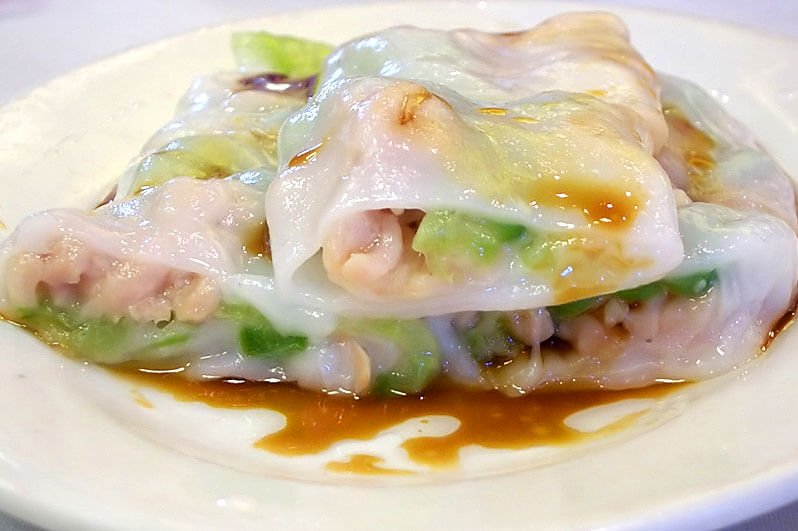
For people from the North, this address serves their most favorite version of banh cuon. The location is also super convenient for travelers.
Opening hours: 6 AM – 6 PM
Price range: 15,000 VND – 30,000 VND
4. Y Thien store – 274 Ba Hat St., D.10
With over 20 years of operational experience, this restaurant is famous for offering the special banh cuon from Da Nang. The beef sausage adds to the rice rolls such a beautiful taste, it requires an adventure into your stomach.
Opening hours: 3 PM – 10 PM
Price range: 15,000 VND – 33,000 VND
5. 150 Nguyen Trai – Alley 150 Nguyen Trai St., D.1
The owner, also the main cook, of this small store is over 90 years old. Although small, her store is always full of people, ever since it opened. Located at one of the main streets in the heart of Saigon, this local store definitely should receive a visit from guests who love experiencing Saigon at its core style.
Opening hours: 5:30 AM – 12 PM
Price range: 25,000 VND
So those are our recommendations. If you’re tired of the constant noodle soups and rice, banh cuon is worth a shot. Let us know what you think in the comments below!
Read more: Top 10 Vietnamese Dishes You Should Try
Enjoy eating Vietnamese food and want to know some more fun info on certain dishes such as com tam, balut, bot chien, and bun cha? Find these and more at the 4utrip Blog!
